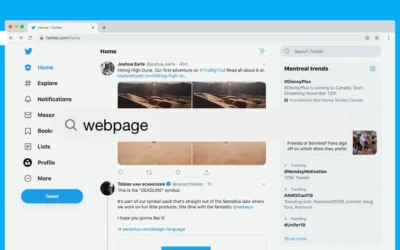WordPress, the most popular content management system (CMS) in the world, powers over 40% of all websites on the internet. One of the key factors contributing to its success is the ability to extend its functionality through plugins. In this ultimate guide, we will delve into the world of WordPress plugin development and equip you with the knowledge and skills to create your own plugins.
Why Learn WordPress Plugin Development?
Learning WordPress plugin development opens up a world of opportunities. Whether you’re a freelancer looking to enhance your portfolio or a business owner wanting to customize your website, being able to create your own plugins gives you complete control over your WordPress site.
With millions of websites relying on WordPress, there is a huge demand for skilled plugin developers. By mastering WordPress plugin development, you can tap into this market and potentially generate a lucrative income by offering your services to clients or selling your own plugins.
Understanding the Basics of WordPress Plugin Structure
Before diving into plugin development, it’s important to understand the basic structure of a WordPress plugin. A plugin is essentially a collection of files that contain code written in PHP, the programming language of WordPress. These files are organized in a specific folder structure and follow a set of naming conventions.
At the heart of every WordPress plugin is the main plugin file, often named plugin-name.php. This file acts as the entry point for your plugin and contains the necessary code to initialize your plugin and register its functionality with WordPress.
Setting Up Your Development Environment
To start developing WordPress plugins, you’ll need to set up a local development environment on your computer. This environment will mimic a live WordPress site, allowing you to test and debug your plugins before deploying them to a production server.
There are several tools and software packages available for setting up a local development environment. One popular option is to use a software stack like XAMPP or WampServer, which provides a complete web server setup including Apache, MySQL, and PHP.
Once you have your local development environment set up, you can proceed to create your first WordPress plugin.
Creating Your First WordPress Plugin
Creating your first WordPress plugin is an exciting milestone in your journey as a plugin developer. To get started, create a new folder in the wp-content/plugins directory of your WordPress installation. Give your plugin folder a unique name that describes its purpose.
Inside the plugin folder, create a new PHP file named plugin-name.php, replacing “plugin-name” with the actual name of your plugin. This file will serve as the main plugin file.
Open the plugin-name.php file in a text editor and add the following code:
<?php
/**
* Plugin Name: Your Plugin Name
* Plugin URI: https://your-plugin-url.com
* Description: A brief description of your plugin.
* Version: 1.0.0
* Author: Your Name
* Author URI: https://your-website-url.com
* License: GPL-2.0+
* License URI: http://www.gnu.org/licenses/gpl-2.0.txt
*/
// Your plugin code goes here.
Save the file and navigate to the WordPress admin dashboard. Go to the “Plugins” section and you should see your newly created plugin listed. Activate the plugin to make it functional.
Exploring WordPress Plugin Hooks and Filters
Hooks and filters are fundamental concepts in WordPress plugin development. They allow you to modify and extend the behavior of WordPress without directly modifying its core files.
Hooks are specific points in the WordPress code where you can insert your own code to execute additional functionality. There are two types of hooks: action hooks and filter hooks.
Action hooks allow you to perform an action at a specific point in the execution of WordPress. For example, you can use the init action hook to register custom post types or enqueue stylesheets and scripts.
Filter hooks, on the other hand, allow you to modify data before it is displayed or processed by WordPress. You can use filter hooks to modify the content of a post, customize the output of a widget, or even change the behavior of a core WordPress function.
Understanding how to use hooks and filters effectively is key to developing powerful and flexible WordPress plugins.
Adding Functionality to Your WordPress Plugin
Now that you have a solid understanding of WordPress plugin structure and hooks, it’s time to add functionality to your plugin. The possibilities are endless, limited only by your imagination and coding skills.
You can create custom shortcodes to insert dynamic content into posts and pages, integrate with third-party APIs to fetch data, create custom widgets to display information, or even build advanced e-commerce solutions.
As you develop your plugin, remember to follow best practices for code organization, documentation, security, and performance. Clean and well-structured code will make your plugin easier to maintain and debug in the long run.
Customizing the WordPress Admin Interface with Your Plugin
The WordPress admin interface is where website owners and administrators manage their WordPress sites. As a plugin developer, you have the power to customize and enhance this interface with your own features and functionality.
You can add custom meta boxes to the post editor screen, create custom settings pages to modify plugin behavior, or even customize the WordPress dashboard with personalized widgets.
By providing a seamless and intuitive user experience in the admin interface, you can differentiate your plugin from the competition and make it more appealing to users.
Testing and Debugging Your WordPress Plugin
Testing and debugging are critical steps in the development process. A well-tested and bug-free plugin ensures a smooth experience for users and reduces the risk of security vulnerabilities.
WordPress provides several tools and techniques for testing and debugging plugins. You can use the built-in WordPress debugging tools, such as WP_DEBUG and WP_DEBUG_LOG, to log and analyze errors.
In addition, there are third-party tools like PHPUnit and Codeception that allow you to write automated tests for your plugin. These tests can help catch bugs early and ensure the stability of your plugin across different WordPress versions and environments.
Best Practices for WordPress Plugin Development
To become a master of WordPress plugin development, it’s essential to follow best practices. These practices will not only make your code cleaner and more maintainable but also contribute to the overall success of your plugin.
Here are some best practices to keep in mind:
- Code organization: Follow a modular and organized approach to code structure. Split your code into reusable functions and classes, and use proper naming conventions.
- Documentation: Document your code thoroughly to make it easier for others (including yourself) to understand and work with your plugin.
- Security: Implement security measures to protect your plugin from potential vulnerabilities. Sanitize and validate user inputs, escape output, and follow secure coding practices.
- Performance: Optimize your plugin’s performance to ensure fast loading times and minimal resource usage. Avoid unnecessary database queries, optimize images, and use caching techniques where appropriate.
WordPress Plugin Development Resources and Tutorials
Learning WordPress plugin development is an ongoing journey. To help you along the way, there are numerous resources and tutorials available online.
Some recommended resources include:
- WordPress Plugin Handbook: The official WordPress Plugin Handbook is a comprehensive guide to plugin development, covering everything from the basics to advanced topics.
- WordPress Developer Documentation: The official WordPress Developer Documentation provides in-depth information on WordPress core functions, hooks, and APIs.
- WordPress Stack Exchange: The WordPress Stack Exchange is a community-driven Q&A platform where you can ask questions and get answers from experienced WordPress developers.
- WordPress Plugin Development Courses: Online platforms like Udemy, Coursera, and LinkedIn Learning offer courses specifically tailored to WordPress plugin development.
Conclusion
Congratulations! You’ve reached the end of your ultimate guide to mastering the art of plugin development. By now, you should have a solid understanding of the basics, as well as the tools and techniques required to create powerful and flexible plugins.
Remember, practice makes perfect. The more you develop plugins, the better you’ll become. So, don’t hesitate to experiment, explore new ideas, and continue your learning journey.
Now, it’s time to put your knowledge into action and start creating amazing WordPress plugins. Whether you’re building for yourself, clients, or the WordPress community, your plugins have the potential to make a significant impact.
So go ahead, unleash your creativity, and let your WordPress plugins shine! To view our other blog posts, visit our website’s blog section.



